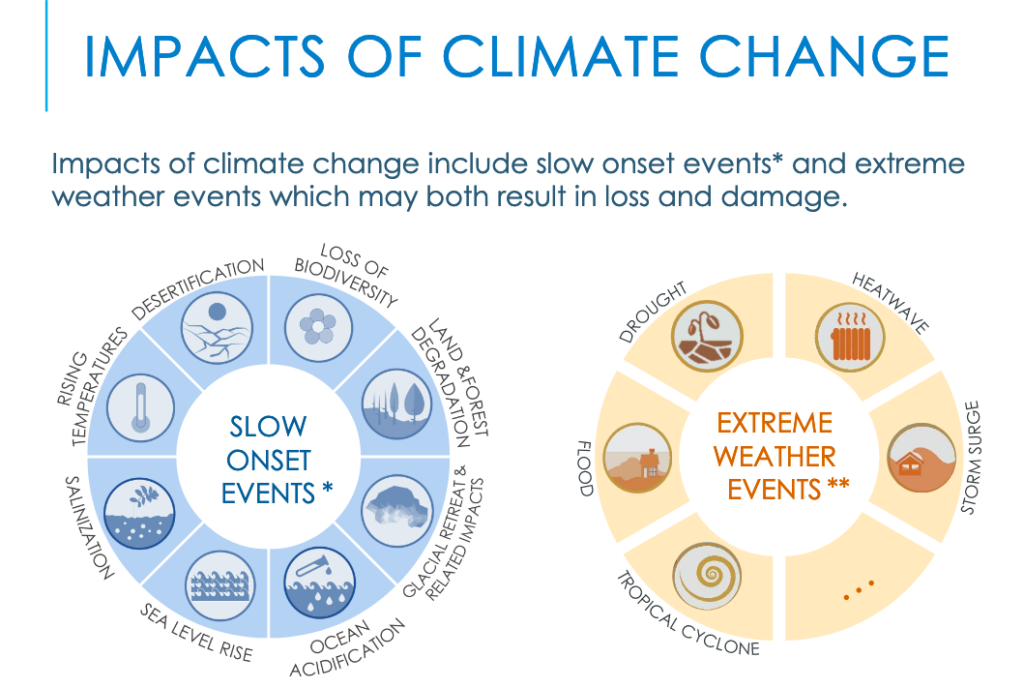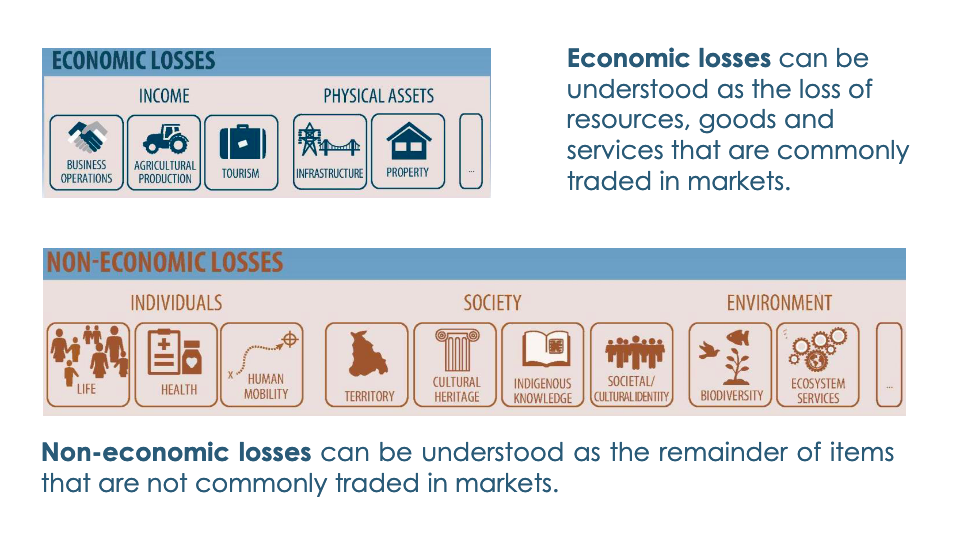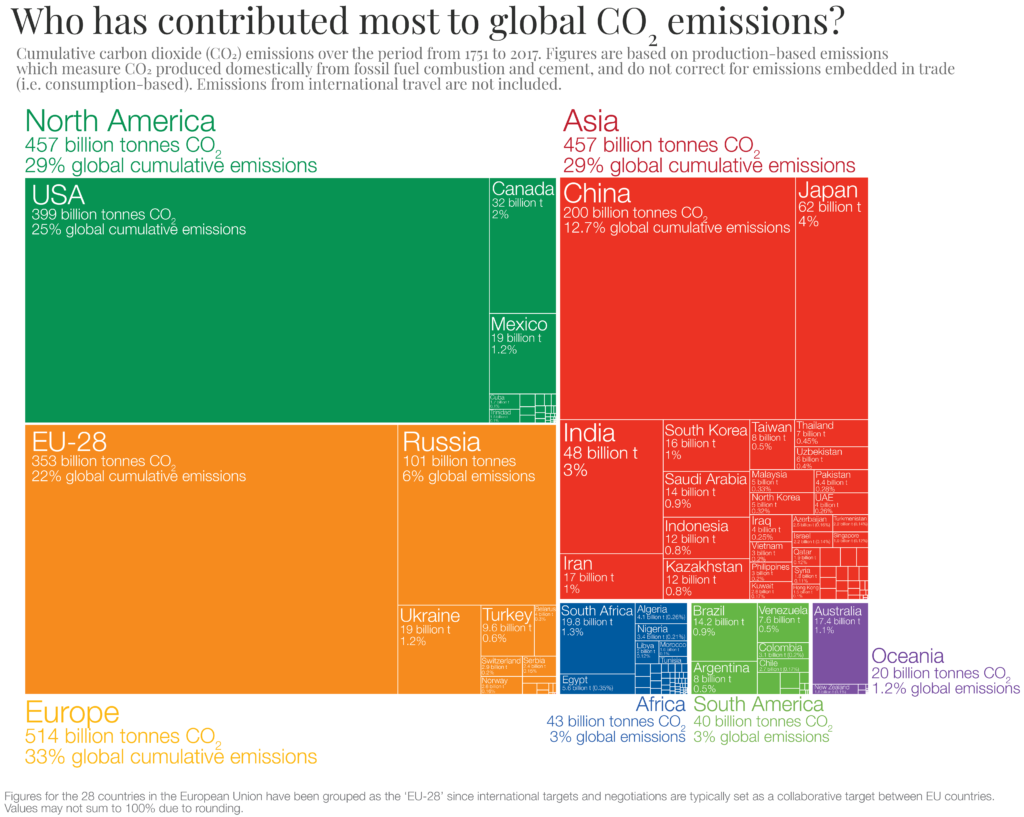ForumIAS announcing GS Foundation Program for UPSC CSE 2025-26 from 19 April. Click Here for more information.
ForumIAS Answer Writing Focus Group (AWFG) for Mains 2024 commencing from 24th June 2024. The Entrance Test for the program will be held on 28th April 2024 at 9 AM. To know more about the program visit: https://forumias.com/blog/awfg2024
Contents
- 1 Introduction
- 2 What is ‘Loss and Damage’?
- 3 What is the difference between mitigation, adaptation and addressing Loss and Damage?
- 4 What actions has the international community taken to address Loss and Damage?
- 5 How much funding currently goes toward addressing loss and damage, and how much is needed?
- 6 What should be done going ahead?
- 7 Conclusion
| For 7PM Editorial Archives click HERE → |
Introduction
Extreme weather events are becoming more frequent and severe, as climate change is becoming evident. The most recent extreme event occurred in Pakistan. According to media reports, at least 33% of the country’s territory became inundated leading to displacement of more than 33 million people (~15% of the population). Experts have called them the worst floods in a century. The floods were preceded by extreme heatwaves in April/May (in the Indian Sub-continent). Pakistan has demanded compensation from developed countries that are being held responsible for climate change. Climate Reparations (or Loss and Damage) has been demanded by many developing countries, most notably, by small island States. Developing countries have very little historic contribution to Green House Gas (GHG) emissions that are responsible for global warming and climate change. However, they are most vulnerable to extreme events due to climate change.
Since the formation of the UN Framework Convention on Climate Change (UNFCCC), vulnerable nations have been calling on developed countries to provide financial assistance that can help them address loss and damage due to climate change. There has been little movement in this regard.
What is ‘Loss and Damage’?
Events occurring due to climate change are having a deep impact on human lives and economic activities. It has increased the frequency of extreme weather events like floods, cyclones etc. It is also contributing to slow onset events like desertification, loss of biodiversity, sea level rise and ocean acidification etc.
Source: UNFCCC, Guide to Loss and Damage
These events due to climate change are responsible for both economic and non-economic losses. Economic losses can be measured in monetary terms e.g., damage to infrastructure/property or agriculture production (in INR or US$). Non-economic losses are intangible and can’t be accurately measured in monetary terms e.g., loss of human life, bio-diversity, cultural heritage or indigenous knowledge. For instance, Communities in Kosrae, Micronesia, have lost burial grounds due to coastal erosion caused by sea level rise. Loss of sea ice in the Arctic has affected the cultural identity and hunting practices among Inuit communities.
Source: UNFCCC, Guide to Loss and Damage
People, communities and nations can adapt to some of these events. For other events, adaptation is not possible, or there is a lack of resources to adapt.
There is no official definition of ‘Loss and damage‘. It is a general term used in UN climate negotiations to refer to the consequences of climate change that go beyond what people can adapt to; or when adaptation is possible but a community doesn’t have the resources to access or utilise them. A close definition is found in the literature review commissioned by the UNFCCC.
| UNFCCC (2012) | Loss | Damage |
| The negative impacts in relation to which reparation or restoration is impossible, such as loss of freshwater resources. | The negative impacts in relation to which reparation or restoration is possible, such as windstorm damage to the roof of a building, or damage to a coastal mangrove forest as a result of coastal surges. |
The developing countries are more vulnerable to climate change events, both due to frequency of events as well as lack of resources to adapt. According to a study, 6 of the world’s 10 most affected countries (between 1996-2015) by extreme weather events were in Asia. Under the Loss and Damage framework, developing countries demand compensation from developed countries for losses/damages suffered due to climate change events.
Two vital arguments in the context of Loss and Damage are “Historic Emissions Argument” and “Polluter Pays Principle”.
‘Historical Emissions’ and ‘Polluter Pays’
At its core, the demand for compensation for loss and damage from climate disasters is an extension of the universally acknowledged “Polluter Pays” principle that makes the polluter liable for paying not just for the cost of remedial action, but also for compensating the victims of environmental damage caused by their actions.
In the climate change framework, the burden of responsibility falls on developed countries that have contributed most of the greenhouse gas emissions since 1750 (considered to be the beginning of the industrial age). The United States and the European Union, including the UK, account for ~47% of all emissions since 1750. Inclusion of Russia, Canada, Japan and Australia takes this contribution to ~60%.
Source: Our World in Data
Historical responsibility is important because carbon dioxide remains in the atmosphere for hundreds of years (300-1000 years according to NASA). It is the cumulative accumulation of carbon dioxide that causes global warming. India, currently the 3rd largest emitter, accounts for only 3% of historical emissions.
Developing Countries that have had negligible contributions to historical emissions and have severe limitations of resources are the ones that face the most devastating impacts of climate change. Hence they demand climate reparations from developed countries.
What is the difference between mitigation, adaptation and addressing Loss and Damage?
Under the Paris Climate Agreement, countries recognized the importance of ‘averting, minimising and addressing‘ loss and damage.
Loss and damage can be ‘averted’ by curbing greenhouse gas emissions (mitigation). It can be ‘minimised’ by taking preemptive action to protect communities from the consequences of climate change (adaptation).
‘Addressing’ loss and damage is the third pillar of climate action: helping people after they have experienced climate-related impacts.
Climate adaptation measures include: (a) Protecting communities from sea level rise by helping them move to higher ground; (b) Preparing for extreme weather disasters by investing in early warning systems; (c) Protecting food supplies; (d) Switching to drought-resistant crops among others.
Loss and damage happens when efforts to reduce emissions are not ambitious enough and when adaptation efforts are unsuccessful or impossible to implement, sometimes due to limited resources.
The IPCC’s 6th Assessment Report (WGII) observes that as the magnitude of climate change increases, the ability to adaptation decreases. It has defined soft and hard adaptation limits. ‘Soft Adaptation Limits‘ are when adaptation options exist but communities don’t have the financial resources needed to adopt them. ‘Hard Adaptation Limits‘ are those when climate change becomes so extreme that no amount of resources can avert or minimize loss and damage.
Coral reefs offer a good example of where adaptation is likely to reach its limits. The IPCC found that 70-90% of tropical coral reefs will die by mid-century even if temperature rise is limited to 1.5oC (and nearly total loss under the 2oC scenario). This will lead to irreversible losses of biodiversity and have a major impact on coastal communities that eat and sell fish that live along the reefs.
| Read More: The IPCC Sixth Assessment Report (Part 2) – Explained, pointwise |
What actions has the international community taken to address Loss and Damage?
At the drafting stage of the UNFCCC in 1991, it was proposed by the Alliance of Small Island States to create an insurance scheme to provide financial resources to countries impacted by rising sea levels. Each country would contribute resources according their relative contribution to global emissions. The proposal was rejected, and Loss and Damage was not mentioned in the Framework Convention adopted in 1992.
Loss and damage first appeared in the negotiated outcome of the UN climate talks in 2007 as part of the Bali Action Plan. In 2013, Warsaw International Mechanism (WIM) was formed to avert, minimise and address loss and damage. The WIM has been mandated to share knowledge, strengthen dialogues among stakeholders and mobilise expertise to enhance action and support to address loss and damage. But neither the WIM nor any other established mechanism delivers funding to help countries manage loss and damage.
Loss and Damage is mentioned in Article 8 of the Paris Agreement. However, there is no reference to provision of finance for climate reparation/compemsation in this Article.
At COP26 in Glasgow, a large coalition of climate-vulnerable countries advocated for creating a new finance facility or fund dedicated to loss and damage. The proposal for loss and damage financing was once again rejected by developed countries.
A 2-year Glasgow Dialogue was established at the COP26. It will discuss possible arrangements for loss and damage funding. It was also agreed to operationalise and fund the Santiago Network on Loss and Damage (SNLD).
Santiago Network on Loss and Damage (SNLD) |
The first session of the Glasgow Dialogue took place at the Bonn UN climate negotiations in June 2022. In Bonn, the developed nations acknowledged the need to deal with loss and damage, but didn’t commit on any steps they would be willing to take to address the problem. The negotiations also saw limited progress on how to design the SNLD.
How much funding currently goes toward addressing loss and damage, and how much is needed?
According to a recent report by the UN Office for the Coordination of Humanitarian Efforts (UNOCHA), annual funding requests related to climate-linked disasters averaged US$ 15.5 billion in the 3-year period between 2019 and 2021. The economic loss from cyclone Amphan in India and Bangladesh in 2020 has been assessed at US$ 15 billion.
A paper published by researchers at the Basque Centre for Climate Change (Spain) estimates that the economic costs in developing countries from damages will increase from US$ 116-435 billion in 2020 to US$ 290-580 billion in 2030, and could reach between US$ 1-1.8 trillion by 2050.
An Oxfam research found that funding appeals linked to extreme weather events are 8 times higher than they were 20 years ago.
Despite the recent mention in the IPCC WGII report that about 24%of the Green Climate Fund’s approved projects refer to loss and damage, it’s difficult to clearly identify the amount of funding available for loss and damage. The lack of an agreed definition makes it hard to tag projects that could be considered loss and damage and obscures its relation to adaptation and mitigation.
What should be done going ahead?
First, it is necessary to arrive at an agreement on a definition of Loss and Damage. The lack of an agreed definition makes it hard to tag projects that could be considered loss and damage and obscures its relation to adaptation and mitigation.
Second, Climate plans and policies should account for loss and damage alongside mitigation and adaptation. The developed countries have to acknowledge their historical contributions and provide funding for both adaption/mitigation as well as Loss and Damage measures.
Third, At COP27, it will be important for negotiators to find a workable pathway and start helping communities that are already suffering and have no mechanism for financial support.
Fourth, To receive funding for loss and damage, it has to be established that the disaster was caused by climate change. Climate science has come a long way and is now advanced enough to enable scientists to say with a fair degree of certainty how much role climate change has had to play in a particular extreme weather event. But it is still far from being an exact science. Further advancements are necessary in climate science which will provide a solid basis for Loss and Damage finance.
Conclusion
The developed countries have continued to dilute their obligations since the UNFCCC came into existence in 1992. Kyoto Protocol failed to achieve its outcome, the promise to provide US$ 100 billion annually in climate finance has remained unfulfilled. They have repeatedly blockaded the attempts to establish Loss and Damage finance. As the impacts of climate change are becoming more and more apparent, developed countries must own up their responsibility and provide immediate assistance to the suffering countries. Else the situation is only going to get worse from here.
Syllabus: GS III, Conservation, Environment Pollution and Degradation
Source: Indian Express, World Resources Institute








